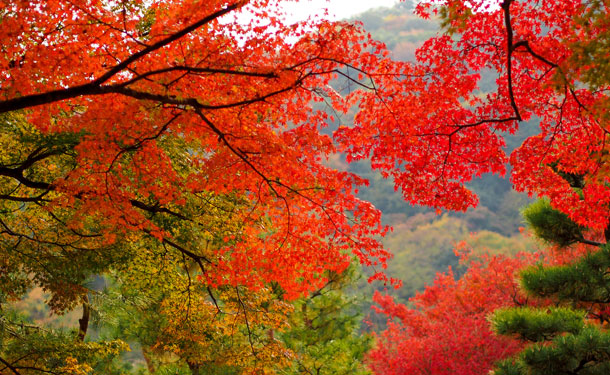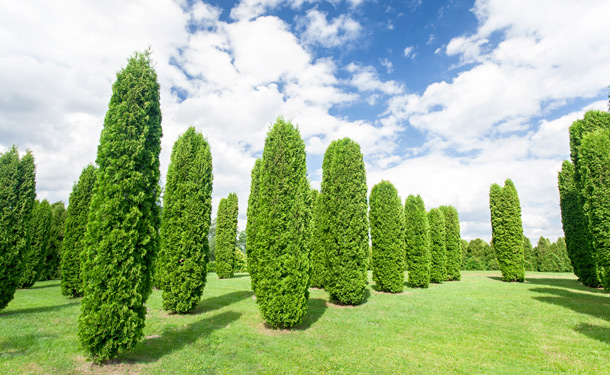Depending on your landscape, you will most likely want to see a mixture of both deciduous and evergreen trees and shrubs. Each displays starkly different characteristics and the care for them differs as well.
If you are asking “What’s the difference?” you are not alone. In this article, we will clearly define the two and take a look at the characteristics of both deciduous and evergreen species playing a part in your year-round landscape.
What Are Deciduous Trees
Simply put, a deciduous tree is one that loses all of its leaves in late fall , then grows new ones as it awakens from dormancy in early spring. In early fall, as the temperature drops, it is easy to spot deciduous trees. Their leaves begin to change colors and by the start of winter, have fallen to the ground.
There is an interesting aspect to this process. The fallen leaves form a sort of insulation around the tree keeping the roots warm during winter. Then, as the leaves decay, they provide nutrients to the soil and the tree, keeping it it healthy.

Some of the most highly sought after deciduous trees for parks, roadways and landscaping are Poplar, Aspen, Maple, and of course the Red Maple tree. Each species is beautiful in the spring and summer months, but as autumn sets in, the colorful display is awe inspiring. So much so, that people will travel hundreds of miles to witness the “changing of the leaves” in large stands of deciduous forests
Care: Pruning and trimming for these trees should take place after the tree has lost its leaves and has gone dormant. However, never prune or trim when the tree tissue is frozen. Find out more about how trees go dormant and survive the cold winter months www.thetreecareguide.com/how-trees-survive-winter-months/
What Are Evergreen Trees
The name says it all. Evergreen trees remain “green” throughout the seasons. While their counterparts (deciduous trees) lose all of their foliage in the fall, evergreens continuously regrow what they may lose.
As evergreens gradually replace their leaves or needles, the litter having a high carbon-nitrogen ratio creates an environment for the soil which becomes higher in acidity and lower in nitrogen. This, combined with year round shelter from existing evergreens creates optimal conditions for the growth of new evergreens.

Besides maintaining their foliage and color year round, evergreen trees are also known as privacy trees. The most sought after privacy tree in the US is the Leyland Cypress, while the American Holly Tree is the ideal evergreen for hedges. Other popular evergreens include Emerald Green Arborvitae, Juniper, and Italian Cypress trees. All of which contribute to a beautiful year round landscape.
Care: With the exception of pine trees, evergreen trees should be pruned or trimmed in early spring (before the start of new growth), or mid-summer when the trees enter a semi-dormant period. Broken, diseased, or dead branches can (and should) be removed when ever they are detected, regardless of the season. For warning signs see www.thetreecareguide.com/tree-stress-warning-signs-preservation-methods/
Planting Trees With Purpose
Before purchasing a tree, it is important to understand the implications of the species. Particularly if it is deciduous or evergreen. If it is privacy for your home and yard, the obvious choice is an evergreen species. If you love the broadleaf fall spectacle of changing leaves (and raking them up), a deciduous species is perfect.
Calling on a tree service professional to evaluate your landscape and make location recommendations is always a good idea. Keep in mind that these professionals see trees at their best and at their worst. Their input and insight before planting will help you enjoy your trees for years to come. Take a look at these planting tips www.thetreecareguide.com/tree-planting-season-learn-4-essential-planting-tips/